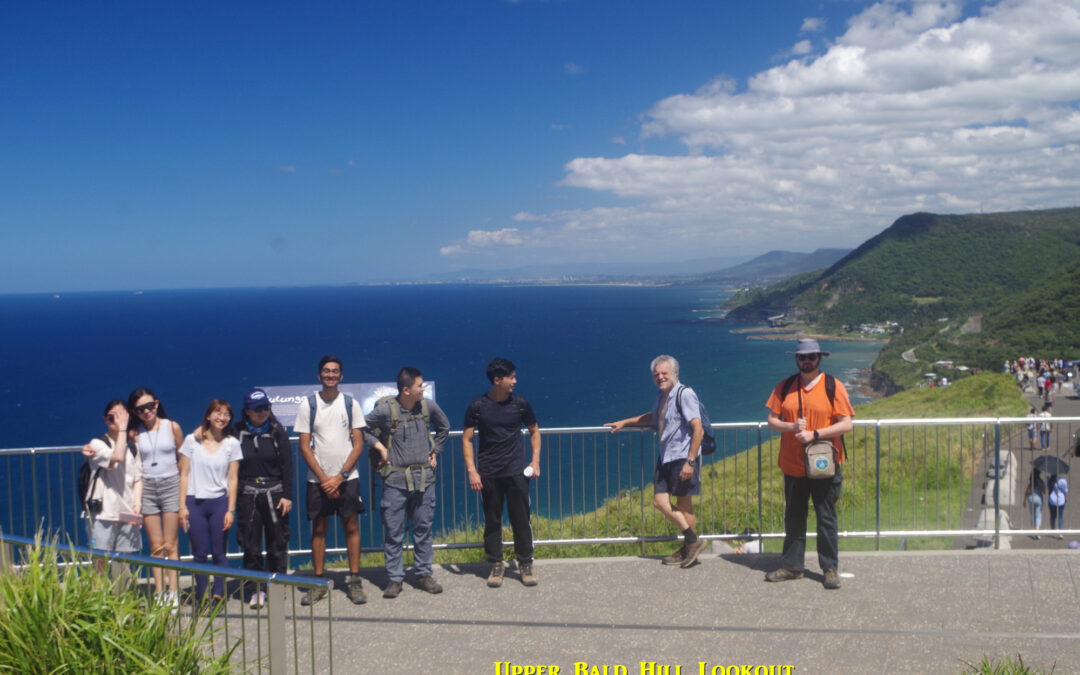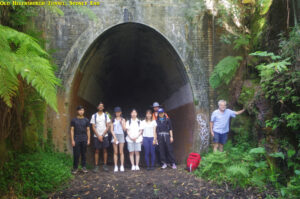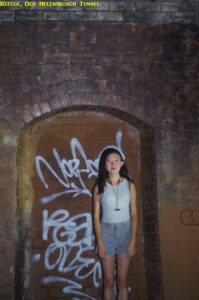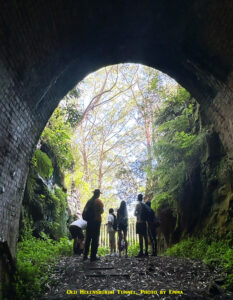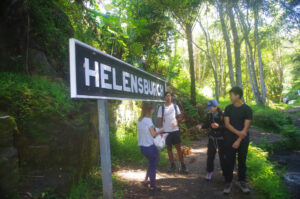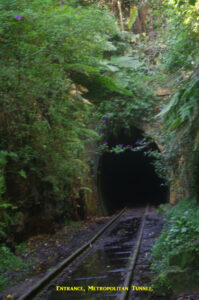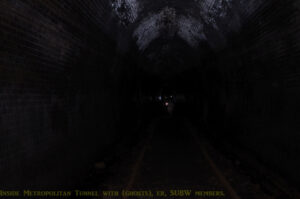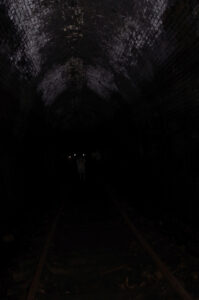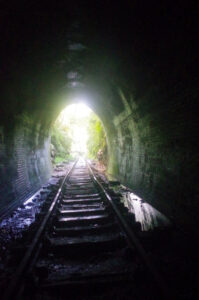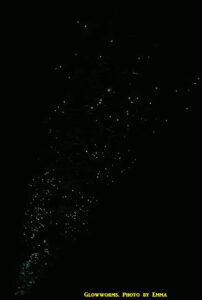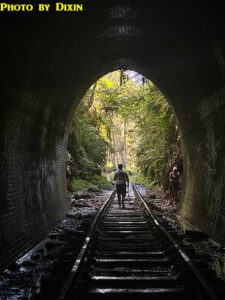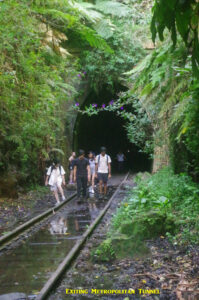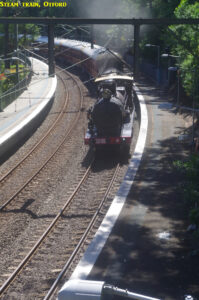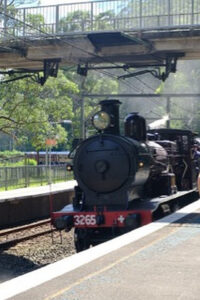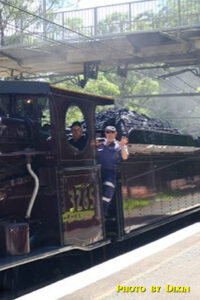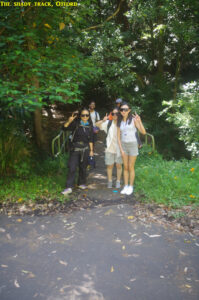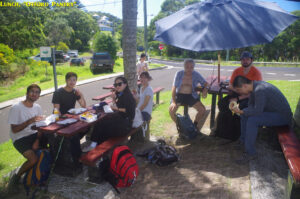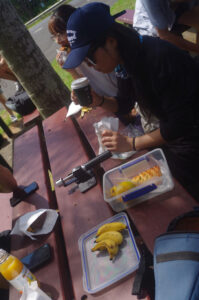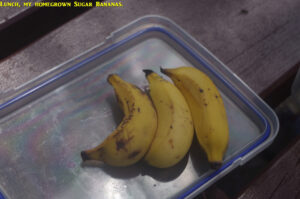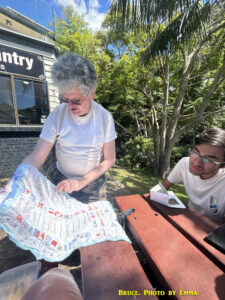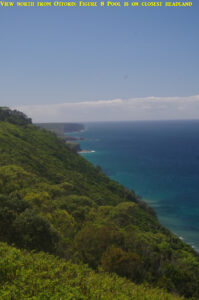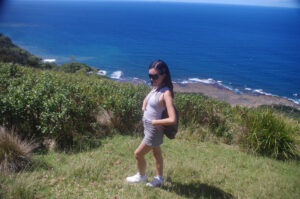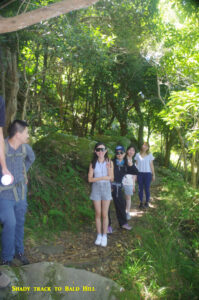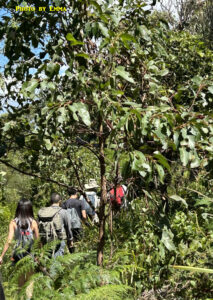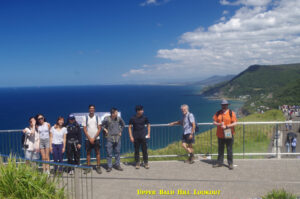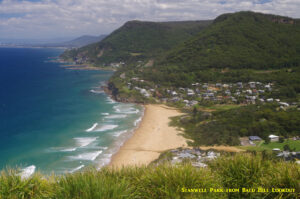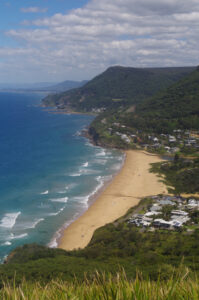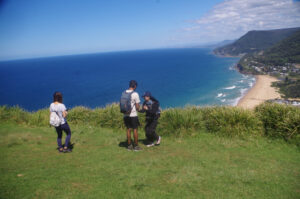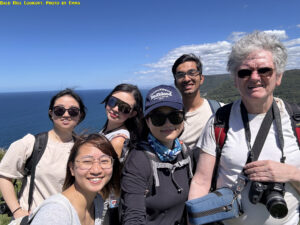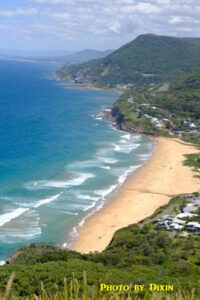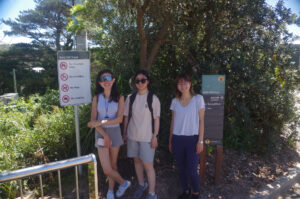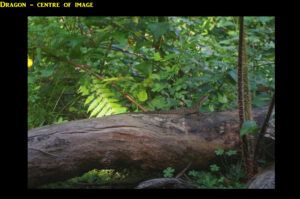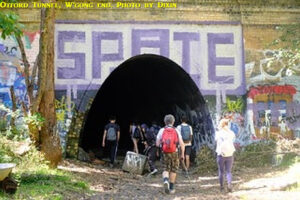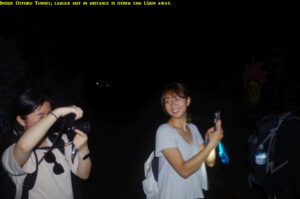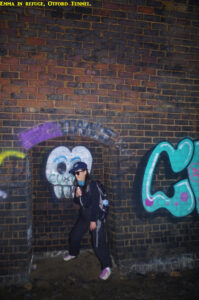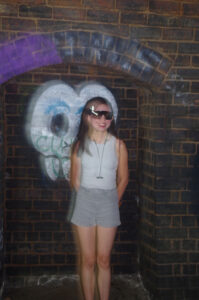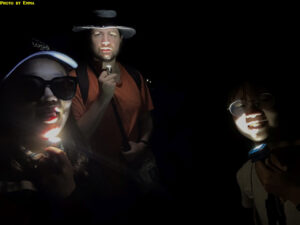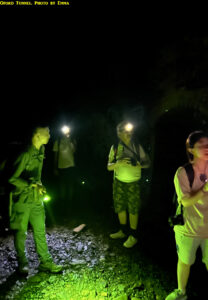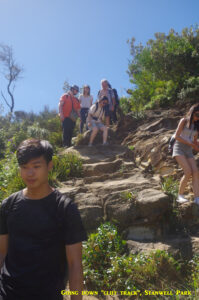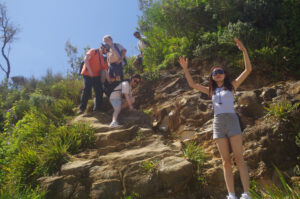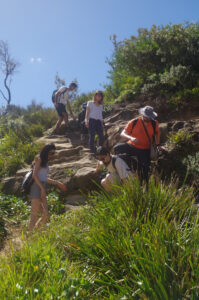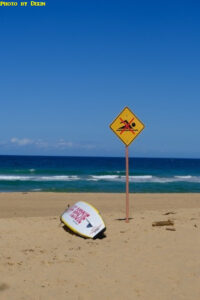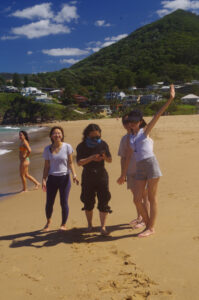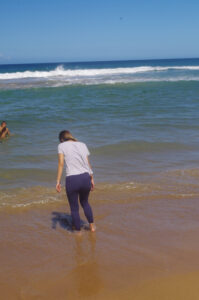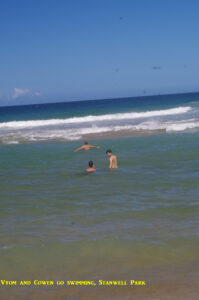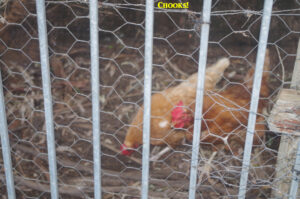Date: 10/3/2024
Trip leader: Bruce Stafford
Party: Cowen, Dixin, John, Salome, Sean, Shibo, Vyom, Xinying, Yunci
Helensburgh to Stanwell Park Beach 10/3/2024
A rather early start was required by me as locally buses were replacing trains as far as Gordon Station, from which I got an all stations train to Central. Still, I was up early enough to cacth the sunruise.
At Central, eight people caught up with me there, with Sean getting on later at Sutherland. Shibo just missed the train however, and had to be content with catching the next train to Otford an hour later, thus missing out on the first two tunnels.
The very warm weather this weekend forced me to abandon an original plan to walk from Helensburgh to Stanwell Park via the Hacking River Fire Trail and Burgh Track, as the Hacking River Valley would have been stiflingly hot and humid (as it gets no breezes), and the climb up to Garawarra Farm would have been taxing in the heat. Therefore the walk was shortened to what you see here, with tunnels added to help keep things cool.
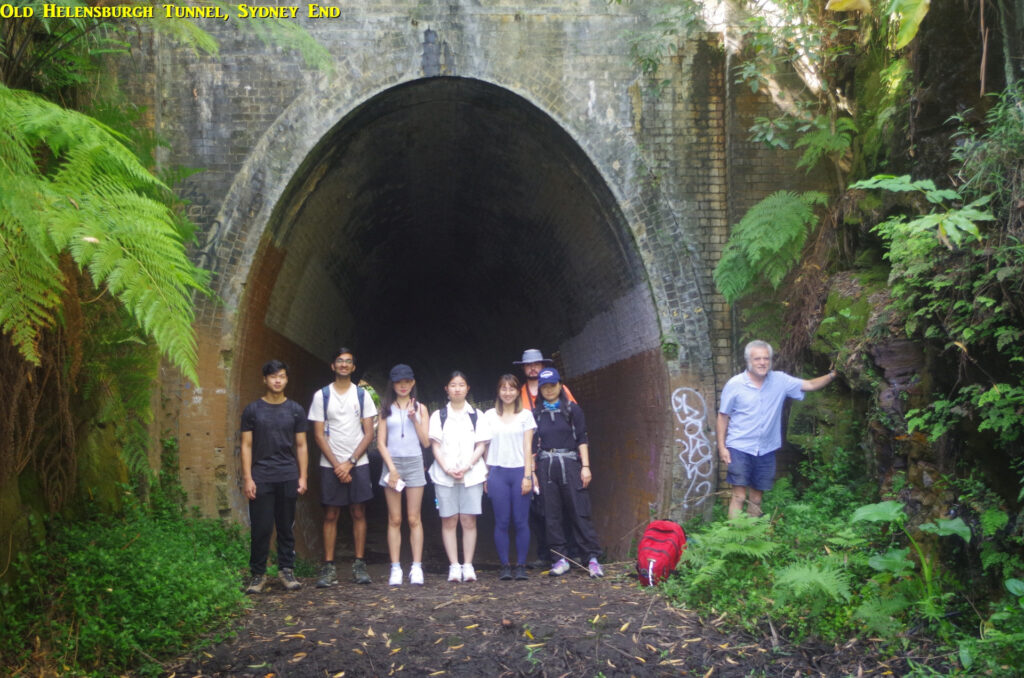
At Helensburgh there was the customary toilet (not “bathroom”) break for some, and note that Helensburgh Station now has staff from 7am to 3pm on Sundays, so there’s no problem accessing the toilets on Sundays. I decided to do all the “administrative” stuff later at Otford to allow sufficient time for people to inspect the two tunnels near Helensburgh Station. These are part of the series of eight original tunnels on the South Coast rail line, all now bypassed by the present line (except the eighth one, Clifton Tunnel, which is still in use). So, it was straight on to the first one, Old Helensburgh Tunnel, number 4 in that series, which is only 80 metres long and has a (mostly) dry floor but is not very exciting. Then we went back across the road to the next tunnel, Metropolitan Tunnel, (No. 5) which does have glowworms but is also rather muddy underfoot in places. Because of the recent dry weather the entrance to this tunnel was less waterlogged than usual, but still needing to get shoes a bit wet in places. It seems that quite a few glowworms were seen, and by looks of people’s shoes not too many got stuck in mud – not this time anyway (it would be very different during a period of wet weather). There are a couple of other things to see around Helensburgh, such as Wilson’s Creek waterfall, but it would need a 2 hour stop there, not 1 hour.
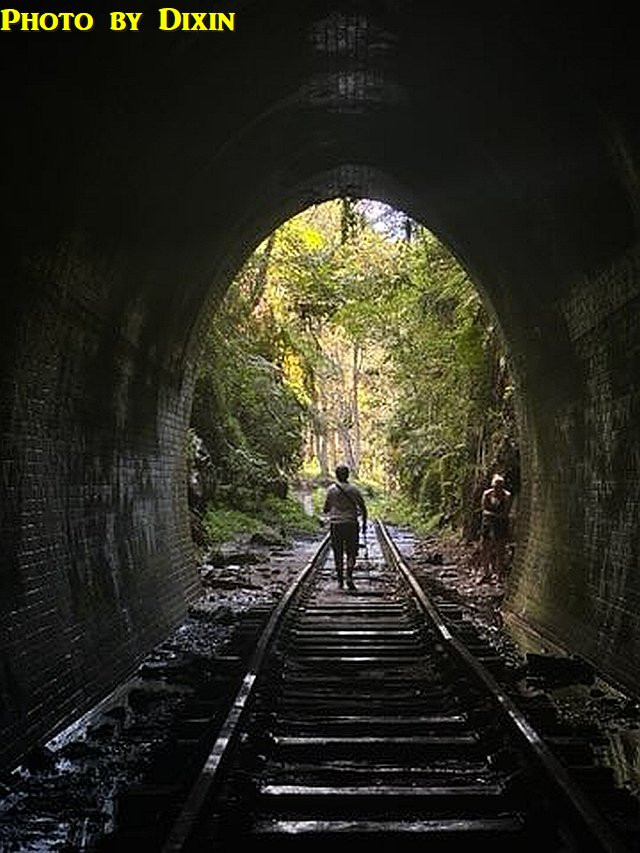
So, after the tunnel visits, we headed straight back to Helensburgh Station just as the next train pulled in (although it was 2 minutes early). Good timing! We then travelled the one stop to Otford Station, where we met up with Shibo. Here I did my admin stuff marking people’s names off, and found that there were no “no-shows”. I also gave a warning about not approaching any snakes they might find (on some trips, people have got closer to animals to get a better photo; doing that is VERY risky with snakes). This turned out to be a timely warning, as we will soon see. A couple of people discovered that there are no “bathrooms” on Otford Station, and the toilets seemed usually locked on weekends. There is an opportunity to top up water bottles as there is a tap on Platform 1.
Doing all this filled in some time to await the next train coming in less than 15 minutes, a special steam train pulled by a late 19th Century steam engine which my great-grandfather supervised the building of in Manchester, U.K. We had a good view from the overhead bridge and it gave a friendly toot as it passed us. In its earlier years, this engine would have passed through the very tunnels we walked through.
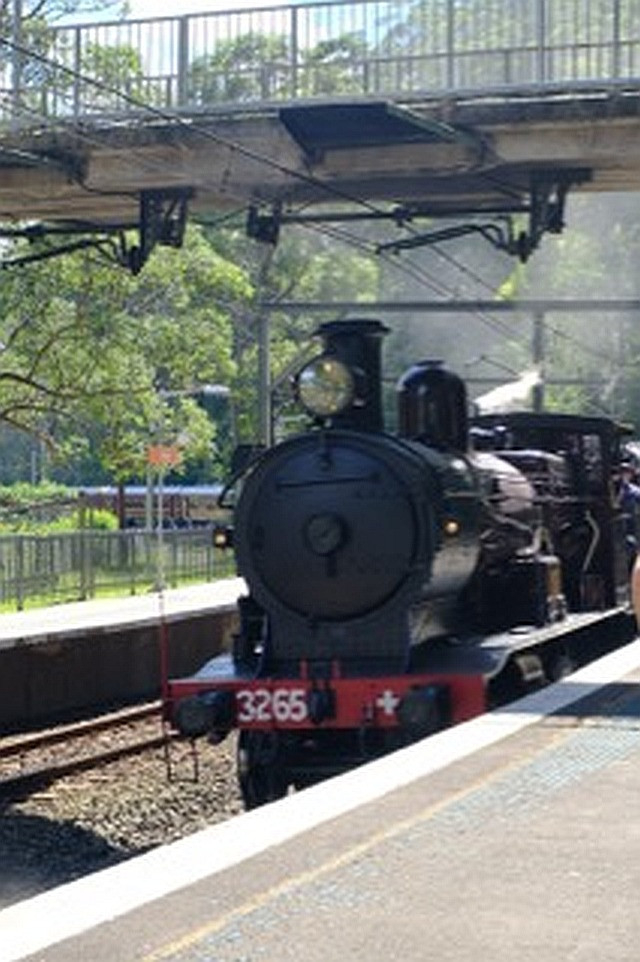
From Otford Station we went up the stairs, but instead of going straight up Beaumont Road, as most do to get to Lady Wakehurst Drive and Otford Lookout, we turned right to follow “Station Road” which is actually a simple shady path for its first 200 metres. Then it’s another 800 metres past the school and then up Domville Road to the “Otford Pantry” shop. Although walking this way doubles the distance to Otford Pantry, it is shaded much of the way, and also the climb up Domville road is compensated by a couple of relatively flat sections instead of the relentless climb up Beaumont Road with its sometimes slippery gravel surface.
At Otford Pantry shop we had lunch in the shade of it’s umbrellas and palms. Some bought coffee and cakes,and others used the toilet there. I passed around some of my home-grown Sugar Bananas which everyone liked, Vyom saying they were better than shop bought bananas. (Sugar Bananas are somewhat smaller than the common Cavendish bananas but much sweeter). Meanwhile, one of the girls got a fright when she came out of the toilet to find a Black Snake (Pseudechis porphyriacus) on the short path to the toilet (goes to show you can find snakes anywhere). The snake hid in some nearby undergrowth and we thought better of trying to look too closely for it.
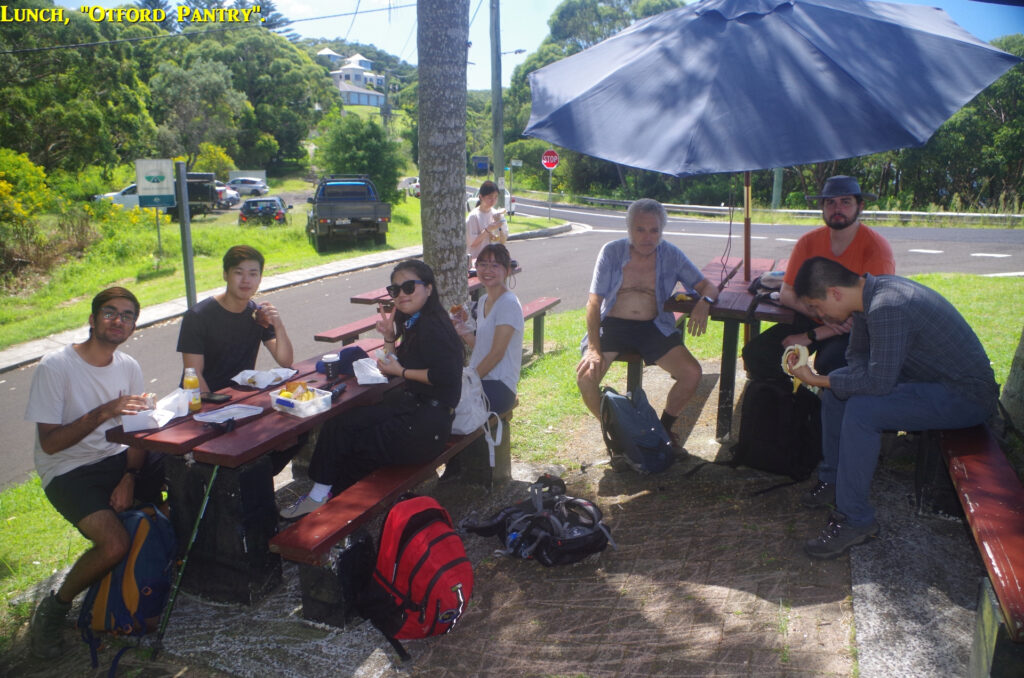
After lunch, we crossed nearby Lady Wakehurst Drive to the view over the ocean, which stretches as far north as the headland at Garie Beach. John also pointed out the track down to Bulgo beach which starts almost opposite the shop; After a few photos of the scenery which stretches as far north as Garie Beach headland (see photo), we followed the track which runs beside Lady Wakehurst Drive for about 350 metres until diverging left to run under shady trees for about 700 metres, and not far from the cliff edge, until coming out at Bald Hill Reserve, which is a popular location for hang gliders, although there were none there this day. The view south along the coast is amazing, as the photos show, and one of the group thanked me for bringing them here.
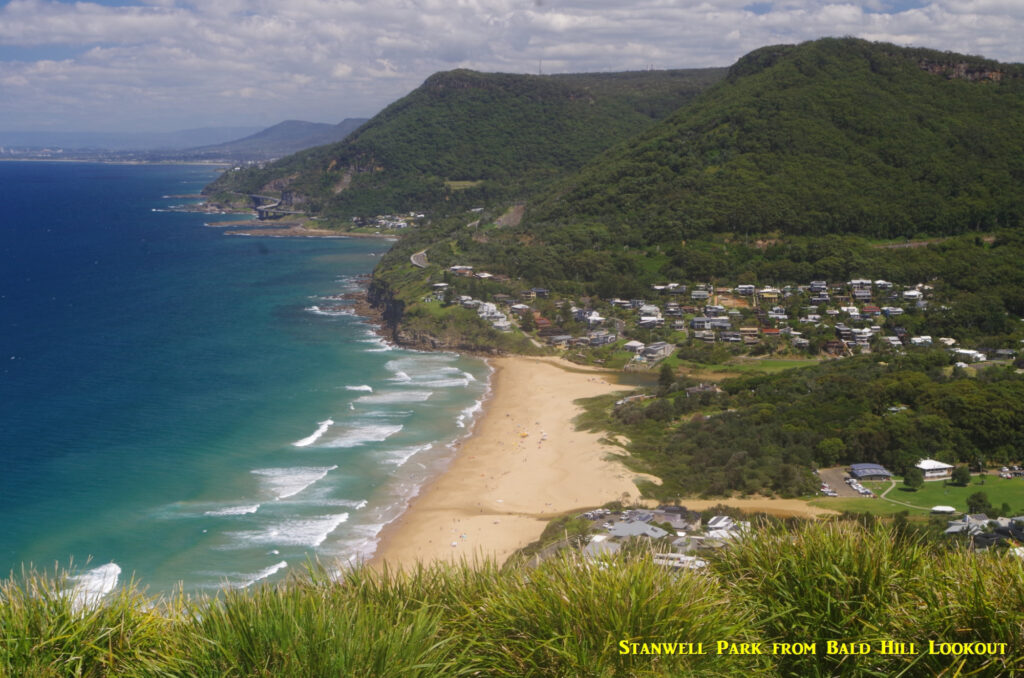
After a lot of photos, we then headed for the start of the brand new Bald Hill Track which goes down down Bald Hill to access Stanwell Park. This track was only opened about last September and our group can claim to be the first SUBW group to use it. It is part of a larger long term plan to link Bundeena with Austinmer as one long coastal walk (and the current track work on the Coast Track through Palm Jungle near Burning Palms Beach is also part of it). The track is quite easy and the rate of descent is quite deceptive, until you get to the bottom of it the beach and look back up at Bald Hill towering over you!
The track ends at Chellow Dene Avenue, which is actually the old trackbed of the original railway and is a dirt track just here. Here we saw another reptile, a harmless Dragon this time (Eastern Water Dragon). Turning left and walking for about 5 minutes takes walkers to the Wollongong end of the old Otford Tunnel. The original plan was to walk to its halfway point, where there is an air shaft to the surface, then back again. This Tunnel is 1.5km long and until 1981 was the longest single-track rail tunnel in Australia. It was opened in 1888 (like the other eight tunnels in this series) and closed in 1920. It rises towards Sydney on a 1 in 40 gradient which is easy for walking but hard for a train. Because time was starting to get away from us,and people still wanted some time at the beach, I decided to go only about 150 metres in to the point where the other end could be seen as a small bright dot in the distance (see photos). This section is also dry and mostly level ground, but further in it becomes roughter with an open active drain you sometimes have to walk in. There are many trip hazards also further in so care must be taken. Speaking of trip hazards, John got his foot caught in an old gate lying on the floor and got some scratches and dirt on his front, but he reported he was OK (and washed off the dirt in the surf later). This tunnel has no glowworms, by the way.
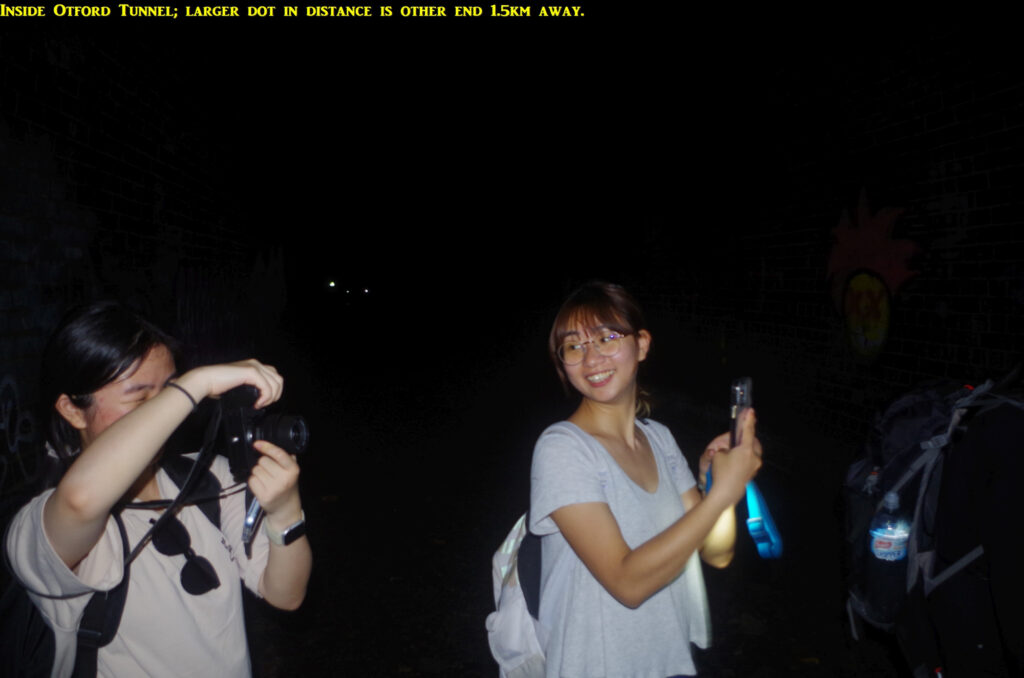
After this tunnel visit we went back to where the Bald Hill Track meets Chellow Dene Avenue and turned left there at the continuation of the track down to a street called “The Drive” at Stanwell Park, and then one last rough track a short way down the cliff face to reach the sandy beach. We made our way to where the red and yellow flags* were up, and settled down on the sand. Fortunately a cool sea breeze had down come up, and sitting in the sun was not uncomfortable. Sean however preferred not to be in the sun, and so headed off to Stanwell Park Station where we caught up with him later.
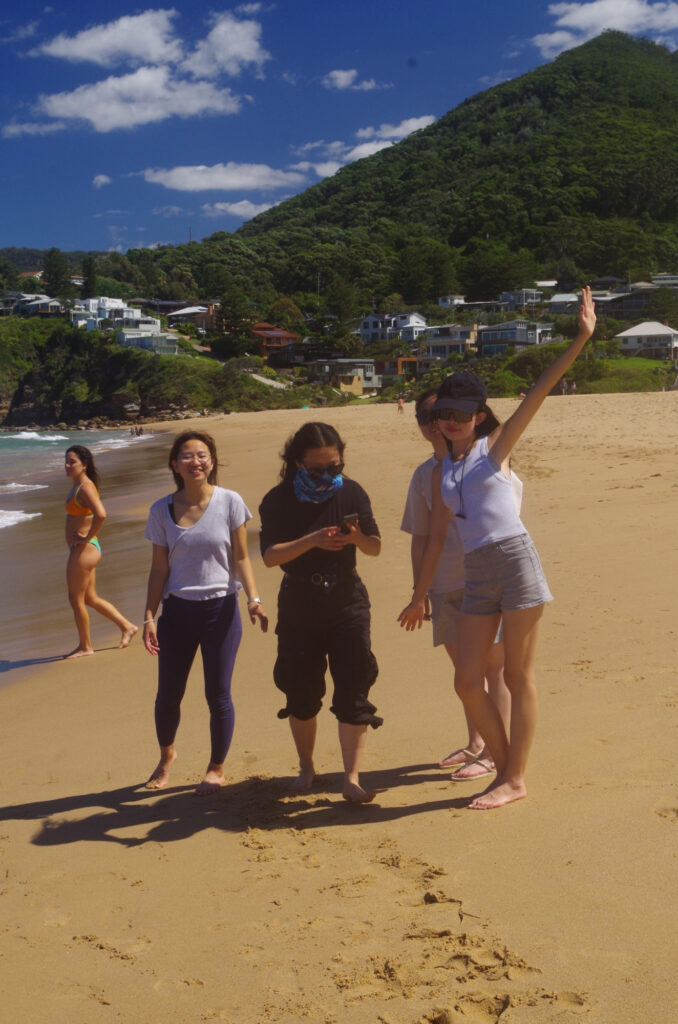
John, Cowen, Vyom and Shibo went in for a swim, and a couple of the girls paddled at the waters’ edge. After the swim we packed up and headed for Stanwell Park Station, going via a route which is a few minutes longer than going directly along the rpad but is in shade. At the rear of a couple of houses backing onto the Reserve we saw some chooks (see photo). Then we crossed Lawrence Hargrave Drive by the footbridge (which is also the site of the original railway station until 1920), and continued along the only other rather steep section of this walk along roads to reach Stanwell Park Station, This steep section makes one wish the station was still at its original site!
The train came about 8 minutes later and it was an uneventful trip home for most, although I still had to catch a North Shore Line train to Gordon then train replacement buses to get home.
The only downside to this trip was the time restrictions placed because of the miserly two-hourly train service from the smaller South Coast stations between Otford and Austinmer on weekends and public holidays. Ridiculous, given the popularity of places like Otford (starting off station for Figure 8 Pool) and Stanwell Park Beach. Time I think for yet anothe letter to the NSW Transport Minister about this. “Constant dripping wears away a stone”.
*Also, still concerning that many overseas students don’t know the reason for the red/yellow flags at beaches. You must swim in the area between these flags for safety.
Photos are by myself and Emma and Dixin (their photos acknowledged on the relevantpics).
Link to Black Snake information: https://australian.museum/learn/animals/reptiles/red-bellied-black-snake/
Link to information about Lawrence Hargrave, who flew box kites on Bald Hill and on Stanwell Park Beach. His kite designs are credited by some to influencing the Wright Brothers designing the first ever aircraft in the U.S. in 1903: https://en.wikipedia.org/wiki/Lawrence_Hargrave
Bruce Stafford,

